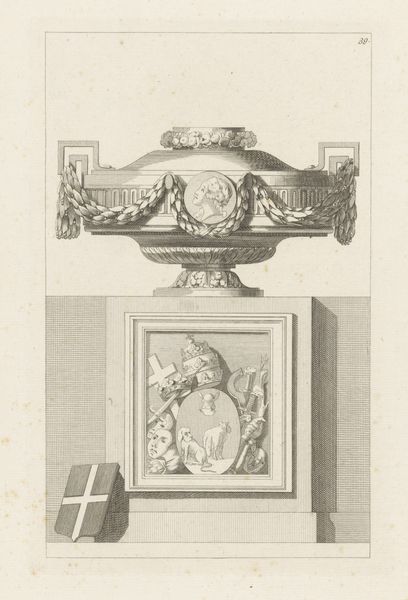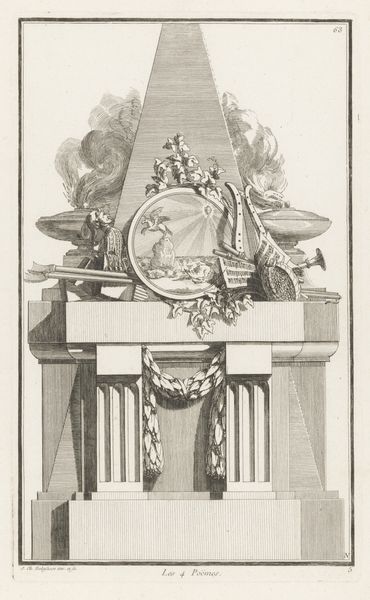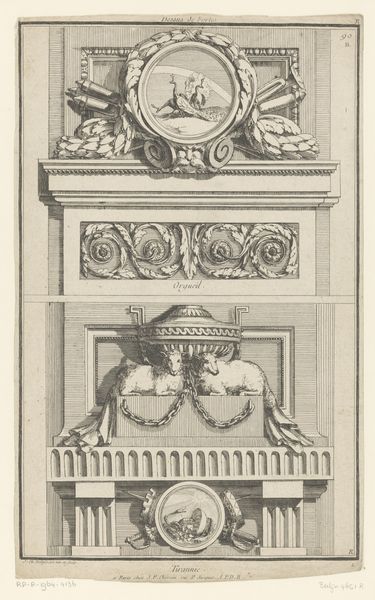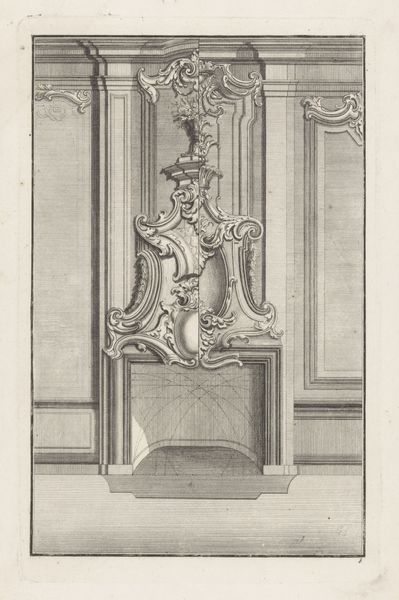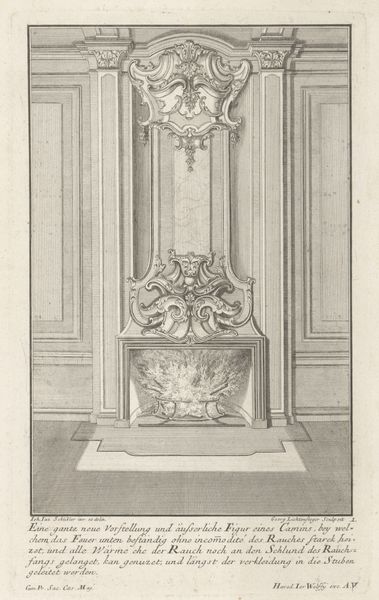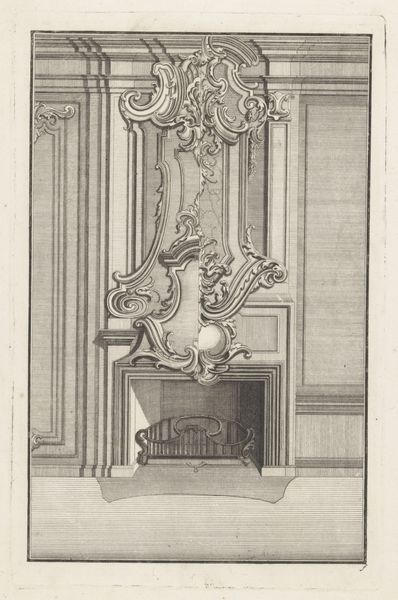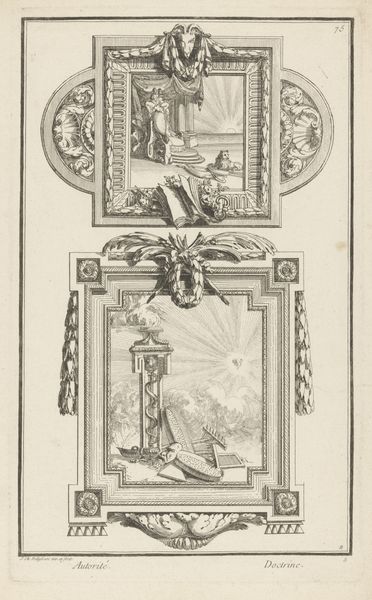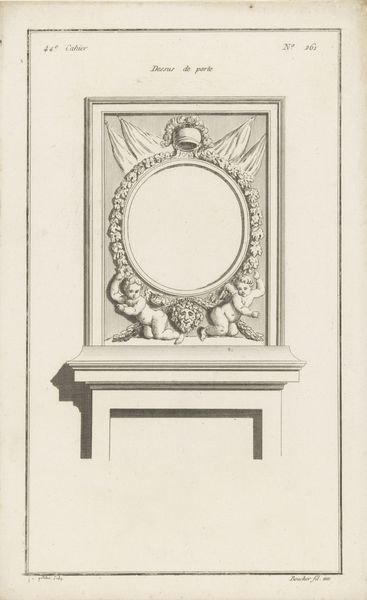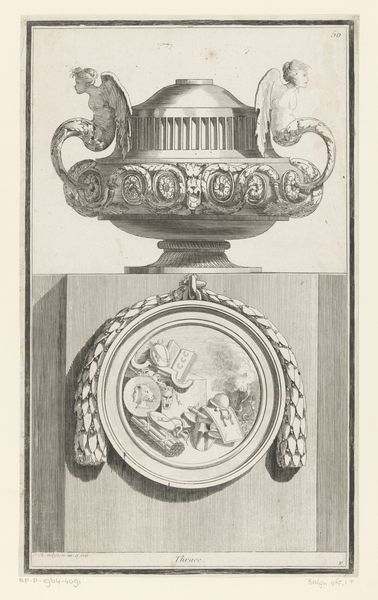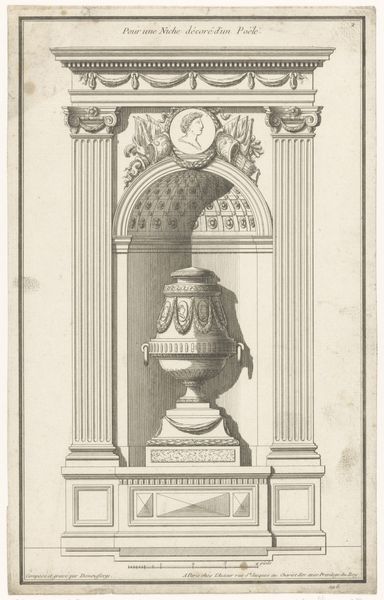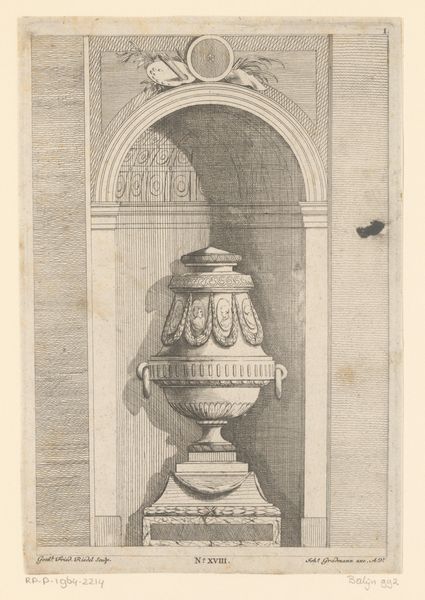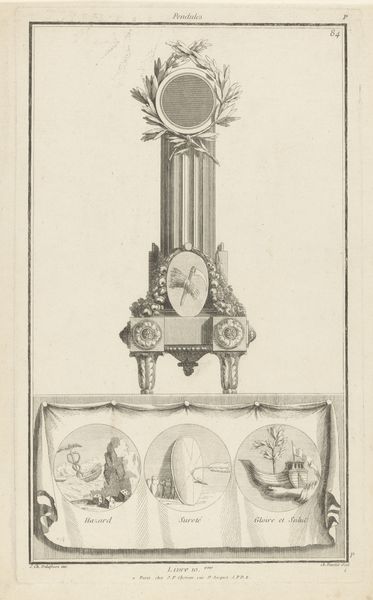
drawing, print, engraving
#
drawing
#
neoclacissism
# print
#
old engraving style
#
form
#
geometric
#
line
#
decorative-art
#
engraving
Dimensions: height 373 mm, width 226 mm
Copyright: Rijks Museum: Open Domain
Editor: Here we have "Savoye," a drawing and engraving by Jean Charles Delafosse, created sometime between 1768 and 1771. The stark linework gives it a very formal, almost severe, feeling, despite the decorative elements. What kind of context can you give us to understand this image better? Curator: This work is steeped in the Neoclassical movement, reflecting a revival of interest in classical antiquity during the 18th century. It's fascinating how Delafosse uses idealized forms and classical motifs to present the Savoy region, given its complex history and political standing. Have you considered how this piece may participate in constructing a particular image of the Savoy for public consumption? Editor: That's a good point! The symmetry and rigid lines certainly give it an air of authority. So, is this less a neutral depiction and more of a carefully crafted statement? Curator: Precisely! Remember that prints like these often served as powerful tools in shaping public perception and promoting specific agendas. The imagery, like the crown, the religious iconography, and even the portraits suggest deliberate references to power, heritage, and allegiance. Do you notice any dissonance between these elements? Editor: Well, now that you mention it, the dogs seem almost out of place amidst all the pomp and circumstance! Curator: Indeed. Their presence could signify loyalty or nobility, but how do you think these seemingly minor elements work in relation to the more grandiose symbolism? What kind of visual arguments can it formulate in this historical moment? Editor: That makes me think more about how decorative arts themselves can be powerful tools for communicating political messages! Curator: Exactly. Decorative arts are not just ornaments. By analyzing who commissioned and consumed works like this, we get closer to grasping its societal purpose and implications. It reminds us that art exists not in a vacuum but within specific social and political structures.
Comments
No comments
Be the first to comment and join the conversation on the ultimate creative platform.
